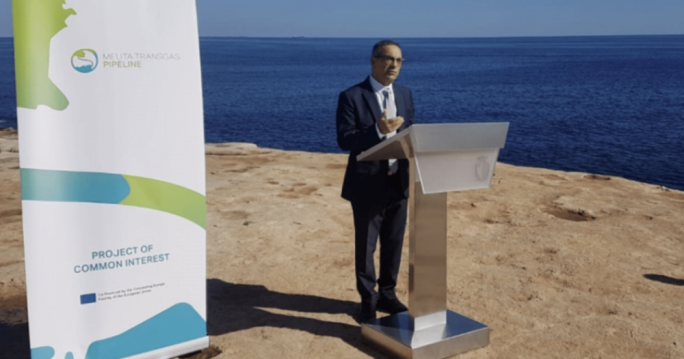How Germany plans energy conversion to green hydrogen
Most notably, more and states are building and installing hydrogen-ready pipelines to be connected to the nationwide supply network in the future

With the worst of the COVID-19 pandemic considered to be over, people are now facing a new obstacle to growth as oil and gas prices are again at a high peak. This is another obstacle to fast recovery and return to normality.
At the same time, countries are facing the uncertainty of supply chains following the Russian invasion of Kyiv, which has resulted in shortages of grains and fodder trapped in silos in Ukraine. This has created an artificial shortage.
In past months, due to rushed de-carbonisation policies, oil giants stopped investing in new upstream projects and focused only on active fields. It goes without saying that as interim measure, this leads to a shortage of oil, rather than an abundance of it, even the fracking oil producers in the US have now upped their output.
Lower investment in oil has a spillover effect on the production of natural gas, which is often a by-product of drilling for crude. Added to that is a dearth of liquefied natural gas terminals for shipping gas from places where it remains relatively easy to access. This has pushed the price for LNG to record highs.
Watch the headlines in Britain where, due to a shortage of drivers to deliver petrol, there has been an acute shortage of fuel that has caught the world’s attention. Many angry motorists were suffering due to a shortage of lorry drivers that forced the UK government to use the army as a temporary measure to deliver petrol supplies to pumps. Turn to Asia and shortages have led to power cuts in parts of China, this time, not due to shortage of fossil fuel at the utilities but from attempts to curb emissions by repeated curfews. With dwindling coal stocks at power stations in India, these conditions led to a surge in the price of imports of the commodity.
Back home, the price hike does not augur well for Enemalta, which is buying electricity from the Electrogas monopoly contracted on a fixed term. Electrogas buys its LNG exclusively from Socar (a state company in Azerbaijan and shareholder in Electrogas), which in turn, not having its own supply of LNG, procures it on the international market.
As a temporary measure the finance ministry is subsidizing Enemalta to avoid inflation in its products to the public. Some expect that the problem will solve itself when the planned gas pipeline to Italy is ready to supply us with cheaper green hydrogen.
As can be expected, the EU favours the use of clean fuel and wants us to cut down on the burning of fossil fuel. By the way, Germany also generates 40% of its electricity from buying Russian gas. By sheer contrast, investment on renewables in Malta is modest with a mere 8% to 10% of electricity generated from clean energy such as PV panels but no turbines are in use. For an island, which is almost 100% reliant on transport powered by fossil fuel, this situation calls for a plan encompassing a scientific but speedy plan to de-carbonise.
An ideal option is to use renewable energy to produce green hydrogen by attracting foreign investors to set up in the EEZ (particularly Hurd’s bank) installing sophisticated infrastructure. Renewable hydrogen is created by using electricity to split water into hydrogen and oxygen through a process known as electrolysis. The hydrogen is collected and used, primarily in industry, while oxygen is released as the by-product or captured for use by others.
Advances in technology have made it possible to de-carbonise the entire fleet replacing internal combustion engines by a technology called a hydrogen fuel cell that uses hydrogen as its power source. Powering these vehicles with renewable hydrogen makes them truly zero-carbon. There are many reasons that speak for hydrogen: such as meeting climate targets for 2030, greenhouse gas neutrality targets for 2050.
Back to Germany, its national hydrogen strategy of 2020, highlights the potential and the opportunities of green hydrogen. The core mission is to replace fossil fuels particularly gaseous and liquid energy sources, which are an integral part of Germany´s energy supply. The federal government has been aware of the potential of hydrogen technology for many years and has made available considerable funding and subsidies.
Under the National Innovation Programme on Hydrogen and Fuel Cell Technology, a total of €1.4bn in funding is currently being provided and €310m will be provided under the Energy and Climate Fund for practice-oriented basic research on green hydrogen. Germany adopted a package for the future which makes available another €7bn for speeding up the market roll-out of hydrogen technology and another €2bn for fostering international partnerships.
These are only some of the efforts being made by the German government to succeed with its hydrogen strategy. Focusing on Germany one meets with examples of the use of hydrogen technology: some have existed for years. In the east of Germany, the hybrid power plant in Prenzlau produces hydrogen with surplus wind and solar kilowatt-hours and uses it as storage. In Brandenburg, the coal-dominated energy region of Lausitz is to become a hydrogen region. There are plans for a further 800 wind turbines to drive forward the production of green hydrogen. Hydrogen technology also seems very promising in terms of CO2-free inland navigation. Since 2015, the Berlin-based company H2Mobility has been building a Germany-wide filling station network for hydrogen particular of interest for bus operators and haulage companies.
Most notably, more and states are building and installing hydrogen-ready pipelines to be connected to the nationwide supply network in the future. Even though hydrogen technology is expensive and not affordable for all, the cost trend of the fossil energy and natural gas prices is becoming prohibitive.
Optimists predict that hydrogen will be the more affordable solution in the long run.






